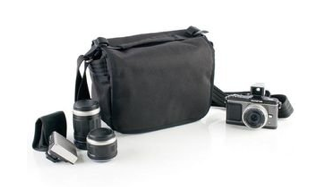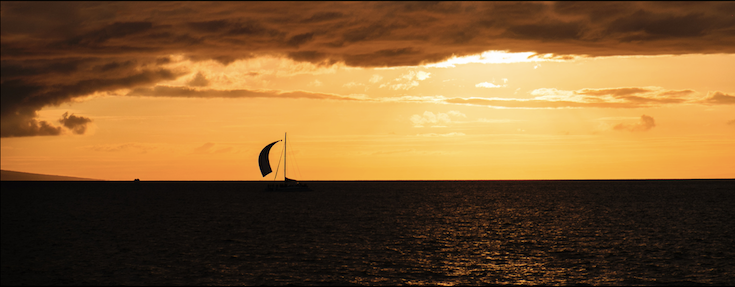X-A1 highly recommended at ephotozine: impressive image quality and excellent noise performance!
In stock check
X-A1 – USA: AmazonUS / BHphoto / Adorama / Pictureline / EUROPE: AmazonUK (via DR)
XC 50-230 – USA: AmazonUS / BHphoto / Adorama / EUROPE: AmazonUK (via DR)
_ _ _
The full X-A1 review is online! ephotozine highly recommends this camera. Very good value for the money and:
“[the X-A1] delivers impressive image quality, with low noise right up to ISO3200 and ISO6400 while retaining good levels of detail. Some may even find the results from this camera preferable to the results from the more expensive X-M1. With the introduction of the X-A1, Fujifilm also introduced a number of more affordable lenses, making the Fujifilm X series a much more compelling system. With impressive image quality and a camera packed with features, we would highly recommend the Fujifilm X-A1.”
Read the whole review at ephotozine here. And for a little bit of pixel peeping check out the X-M1 at 12800 and the X-A1 at 12800. Or check out this small comparison of an anonymous FR-reader.
And also photographyblog posted its X-A1 samples here. They seem to confirm the stellar high ISO performance of the X-A1.
I did a quick comparison for you. But feel free to make your own pixel peeping tests and leave a comment. MJr said: “The X-A1 definitely appears to have lots of ‘smart’ noise reduction.” So does it all depend from the settings?
cheers
Patrick
X-A1 – USA: AmazonUS / BHphoto / Adorama / Pictureline / EUROPE: AmazonUK (via DR)
image courtesy: photographyblog
X-A1: 1/750 sec f/5.6 | 24mm | ISO 25600 — X-M1: 1/640 sec f/8 | 24mm | ISO 25600
XQ1: compact camera with X20 sensor to be launched too! (trusted Japanese source)
the Indoesian site now removed the X-E2 and XQ1 from the list
This comes again from the trusted Japanese source, so do NOT take it with a grain of salt :)
Fuji will launch a compact camera with the same sensor of the X20 but smaller body. The name could be the one spotted by a FR-reader at the Indonesian registration site: XQ1!
Looks like the next 2 X-series cameras announced on October 18th will be:
1) X-E2
2) compact camera with 2/3 X-Trans sensor II. (XQ1)
Compact size and amazing IQ! Sound a bit like an [shoplink 12885 ebay]XF1[/shoplink] replacement to me, which I suppose didn’t sell well because of the relative complex handling of the camera. But as you can imagine I’m tirelessly working to find out more.
One more thing: no trusted source could confirm the rumor (of an anonymous source) about the X70 until now.
Stay tuned via facebook, twitter and RSS feed on October 18th! Spread the word… and don’t worry to quote the source of this rumor ;)
have a great start in this new week
Patrick
Bags for your X – part II
Hey hey!
Do you remember the “bags for your X” post here? There was a lot of interest for this (vintage) bag-collection. (thanks again Martin)
Many of you added their own bags in the comments. So I thought it could be nice to update the post. You’ll find the most clicked bags of the last article, some new suggestions from the comments, the new Think Tank mirrorless mover and TurnStyle 5 bags.
At the end you’ll find a poll where you can vote your 3 favorite bags.
But before we start, FR-reader Dave wrote me that “I was looking at the new Think Tank Mirrorless Mover bags, but it wasn’t obvious from Think Tank’s website that the X-Pro1 would fit in the smaller models. I got a hold of the three smallest bags and took a few images which I posted at the link shown above. I’m thinking that your readers might also be interested in this information?” So check out his flickr [update: the link doesn’t work anymore. I hope Dave will sent me an updated one] here to see how the X-PRO fits in the various mirrorless mover bags.
But now let’s start!
1) Think Tank Retrospective 5: [shoplink 14253 ebay]your eBay[/shoplink] / [shoplink 14253]your Amazon[/shoplink] / BHphoto / Adorama / Pictureline
[shoplink 14253 ebay] [/shoplink]
[/shoplink]
2) Gariz Leather Bag (website / ebay via slidoo / [shoplink 14254]your Amazon[/shoplink])
.
3) Billingham Hadley Small: [shoplink 14255]your Amazon[/shoplink] / [shoplink 14255 ebay]your eBay[/shoplink] / composinghands review
[shoplink 14255 ebay] [/shoplink]
[/shoplink]
4) Domke F-series: [shoplink 14256]your Amazon[/shoplink] or ebay worldwide via slidoo)
(picture: Domke F-803 (ebay worldwide)
5) Think Tank Hubba Hubba Hiney (ebay worldwide or [shoplink 14257]your Amazon[/shoplink]) – review here.
6) Kalahari L-21 at AmazonGER or ebay worldwide.

.
7) Ona Bag The Brooklyn (AmazonUS)… (Ona Bag overview at AmazonUS)

.
8) National Geografic NG A2540 ([shoplink 14258]your Amazon[/shoplink] / [shoplink 14258 ebay]your eBay[/shoplink])
 [/shoplink]
[/shoplink]
9) Rollei DSLR Vintage bag at ebay via slidoo
10) Montgomery Street Courier ([shoplink 14259]your Amazon[/shoplink] or ebay worldwide via slidoo)

11) Think Tank Mirrorless Movers: [shoplink 17019 ebay]your eBay[/shoplink] / [shoplink 14261]your Amazon[/shoplink] / Adorama / BHphoto / Uniquephoto
[shoplink 17019 ebay] [/shoplink]
[/shoplink]
12) Lowepro hatchback 16L: [shoplink 17020 ebay]your eBay[/shoplink] / [shoplink 14260]your Amazon[/shoplink]
[shoplink 17020 ebay] [/shoplink]
[/shoplink]
13) Think Tank TurnStyle 5: [shoplink 15717 ebay]your eBay[/shoplink] / BHphoto / Adorama / [shoplink 15717]your Amazon[/shoplink]
[shoplink 15717 ebay] [/shoplink]
[/shoplink]
_ _ _
Feel free to tell your friends via facebook and twitter to vote the bag-poll.
So what’s next? Maybe tripods? Just tell me in the comments your favorite tripod.
FR-readers zone: long exposures, speed booster, X100S High Sync Speed + Craig’s biggest shoot since switching to the X
Time to take a (very short) break from the rumors and to share your images and stories of your eXperience with the Fuji X-series.
Keep it up! You can contact me via email at fujirumor@gmail.com, facebook and twitter.
cheers
Patrick
Lawrence
Hey Patrick – I saw your featured Jeff’s work a few days ago [admin: see it here]. I’ve known Jeff for years and he’s an amazing photographer. He was the person who helped push me over the line when it came to Fuji and I’ve not looked back !
I just wanted to drop you a line and share some images from my trip up to Banff a couple of weeks ago. This was the first time I did any extended travel with the system and it’s been amazing. I bought a [shoplink 12888 ebay]14mm f2.8[/shoplink] for the trip and used it probably 80% of the time. Aside from the size advantages of the system on hikes, the X sensor has such amazing resolving power and image quality (especially when processed in in a good RAW converter like Capture One). That and the quality of the glass has convinced me that this is not only the system for a balance of weight and IQ, but is one of the best landscape systems period.
Anyway, there’s a few of my favorite shots in the link below. A lot of long exposures – I used a B+W ND 110 filter and a [shoplink 16456 ebay]Gitzo 1542T tripod[/shoplink] (when Fuji fixes the placement of the tripod mount in the next version I’ll be a lot happier). All shots with the Fuji X-E1, 18-55 kit lens, 35mm f1.4 or 14mm f2.8.
http://lawrenceripsher.com/post/60729936323/over-this-past-week-ive-been-posting-photos-from
Feel free to feature this online and embed any images / text.
Cheers!
Lawrence
_ _ _
Rob
Hello, I just wantd to pass along a few of my findings using my loved Fuji X-E1, if fuji would fix the video exposure issue I would even leave my d800 home on my current trip. Anyways in one of your recent posts it was mentioned that you cant make photos with extreme bokeh and small DOF. I currently only have the 18-55 (waiting on the [shoplink 16128]23mm 1.4[/shoplink]) but I have lots of nice Fmount lenses so I have been using the metabones [shoplink 16275 ebay]speedbooster[/shoplink] and wow Ive been getting really nice results. Some of the photos in the links to follow show the ridiculous nikon 85mm 1.4G with the speedbooster making it closer to a 90mm F1.0 and then the other is a [shoplink 15642 ebay]kowa 2X anamorphic lens[/shoplink].
– Shots of setup: http://www.robbannister.com/download_files/fuji/xe1_kowa.jpg / http://www.robbannister.com/download_files/fuji/xe1_85.jpg
– Fuji X-E1 and [shoplink 15642 ebay]Kowa 2X Anamorphic[/shoplink]: http://www.flickr.com/photos/robbannister/9457550567/sizes/l/
– Fuji X-E1 and Icorama 1.5X Anamorphic: http://www.flickr.com/photos/robbannister/9457469698/sizes/l/
a
– Fuji X-E1 18-55: http://www.flickr.com/photos/robbannister/9458628227/
– Fuji X100: http://www.flickr.com/photos/robbannister/9461410328/sizes/l/
– Fuji X-E1 and Speed booster – DSO Lens with low contrast (nikon Fmount / Helios): http://www.flickr.com/photos/robbannister/9461406326/
– NIkon 85mm 1.4G: 1 / 2 / 3 / 4 / 5 / 6 / 7 / 8 – – – Nikon 50mm 1.4D: 1 / 2 /
I just wanted to show the speed booster with the 85mm 1.4. I did find the speed booster amplified the color fringing on the 50 1.4d quite a bit.
Regards,
Rob Bannister
Lead Compositor / Head of 2D
www.robbannister.com / 500px.com
Rob
_ _ _
Morten
Hi Patrick. I did a high sync test with the X100s last night. I am pretty stoked about shooting these at 1/1000 of a sec. My 5D III should handle 1/200 but usually works best at 1/160. Can’t wait to use this feature more. For your Mixed Zone if interested:
http://mfoto.ca/blog/fabrice-soccer-portrait-x100s-high-sync-speed
Morten
_ _ _
Craig Litten
Hi Patrick,
I wanted to share a recent shoot with you all taken with the Fuji X-Pro 1, [shoplink 12891 ebay]18mm[/shoplink], [shoplink 12889 ebay]35mm[/shoplink] and [shoplink 12887 ebay]18-55mm[/shoplink] lenses. The shoot was for a company called Sun Bum for their 2014 catalog. It was shot over two days on Cocoa Beach, Florida (Sun Bum’s HQ). I shot more than 3,000 photos in the hot sun, surf and sand with the two X-Pro 1 bodies and they performed nearly flawlessly (except for a few freeze-ups–didn’t freeze before the last firmware update).
Lenses, even the 18-55mm, are tack sharp and amazing. I didn’t plan on using the 18-55mm, but found myself using it more and more as the shoot progressed because of the super fast and silent autofocus, as well as the flexibility of the zoom. I shot without the hood, which I hate (Fuji please, get rid of these cheap petal-type hoods, they do NOT fit the styling of the X cameras!). I shoot with the OVF mostly on the X-Pro 1 except when shooting up close then I switch to the EVF. But when using the zoom, I only shoot with the EVF.
This was my biggest shoot since switching to the X, and after two days of shooting, I didn’t even notice the weight of the cameras. Wondrous!
Craig Litten (website)
- Previous
- Page 1
- …
- Page 1,537
- Page 1,538
- Page 1,539
- Page 1,540
- Page 1,541
- Page 1,542
- Page 1,543
- …
- Page 1,680
- Next















